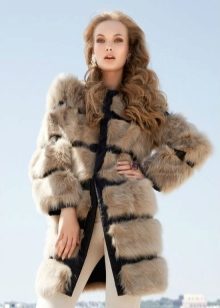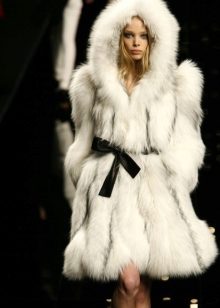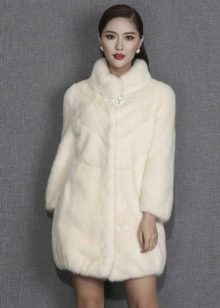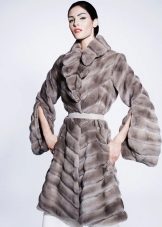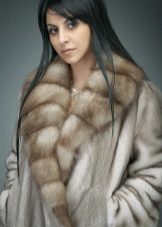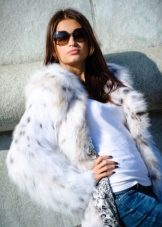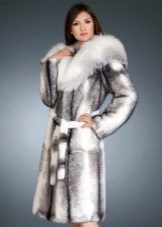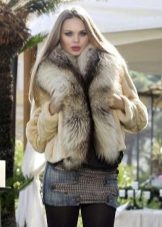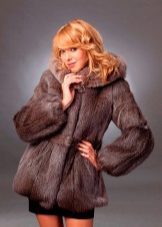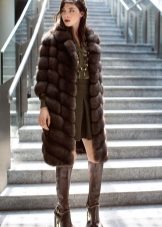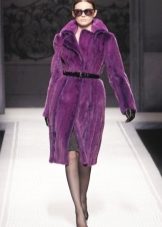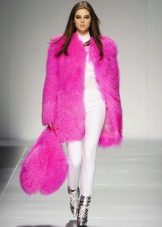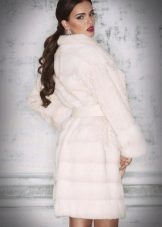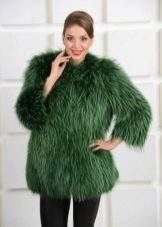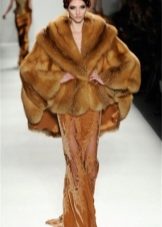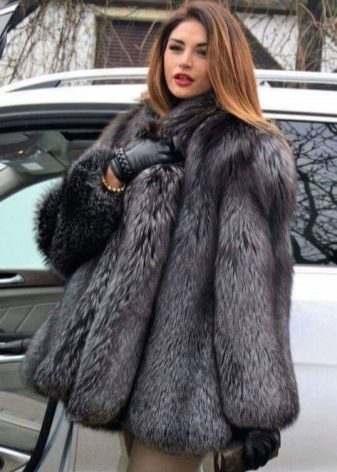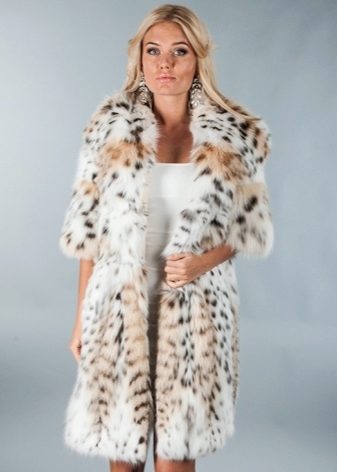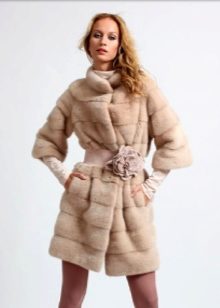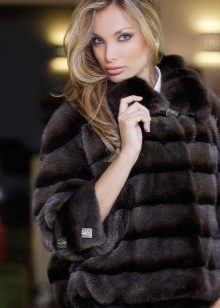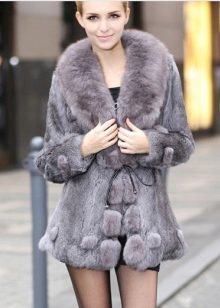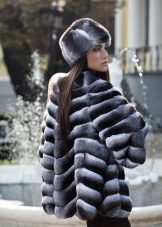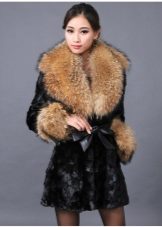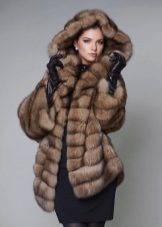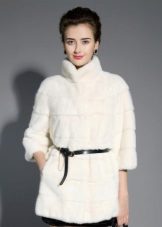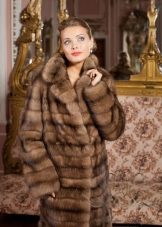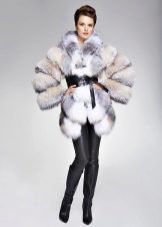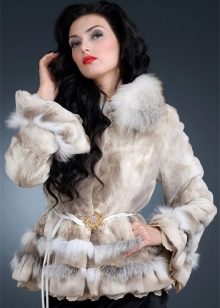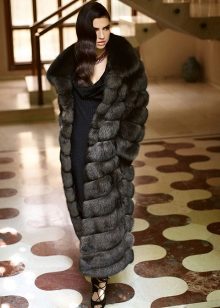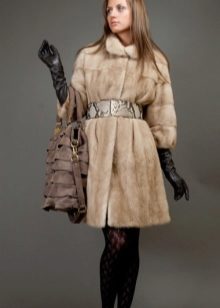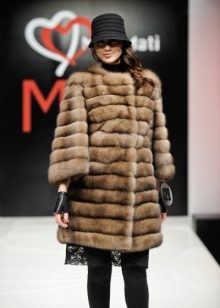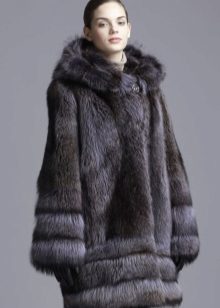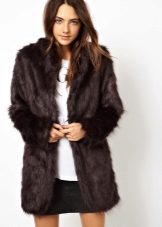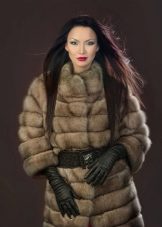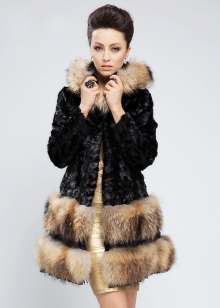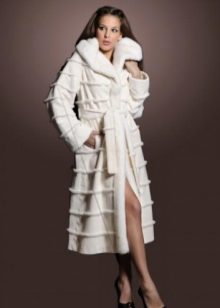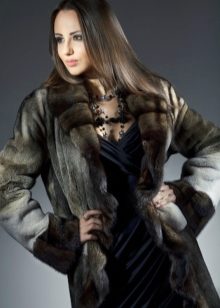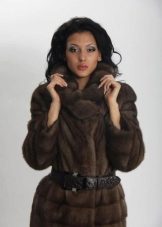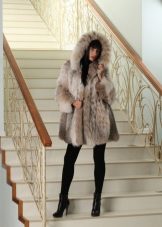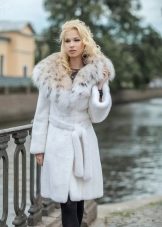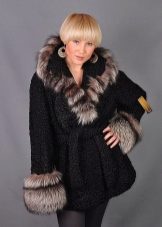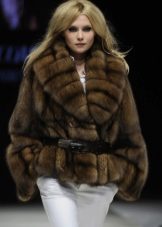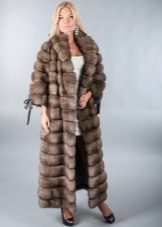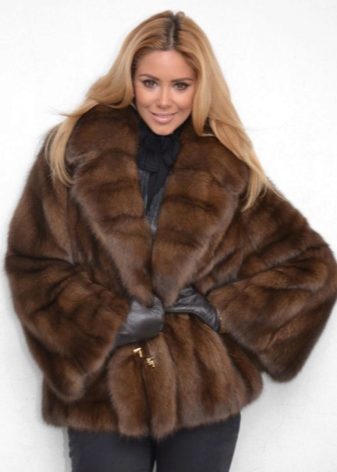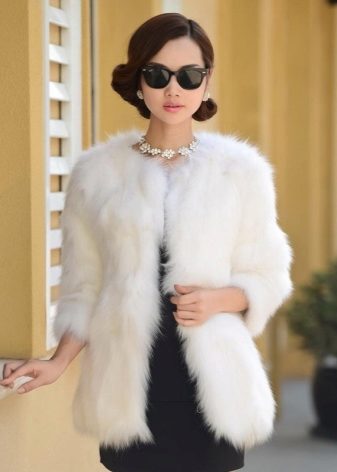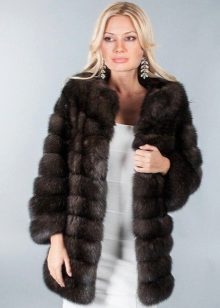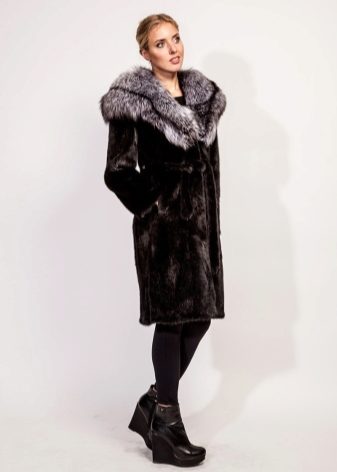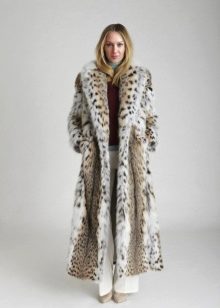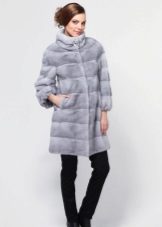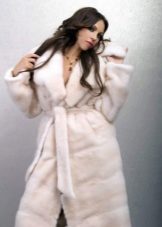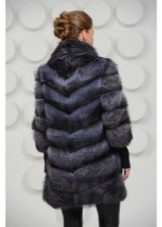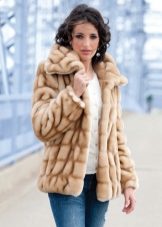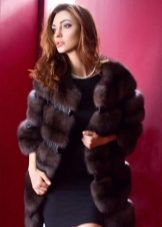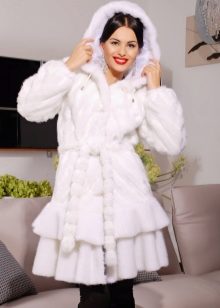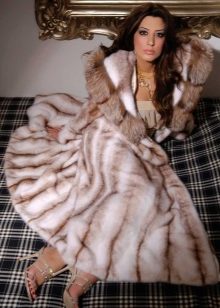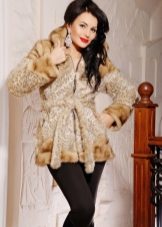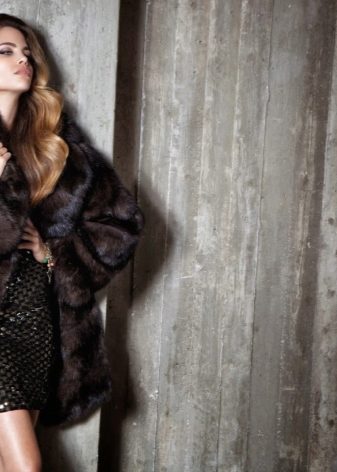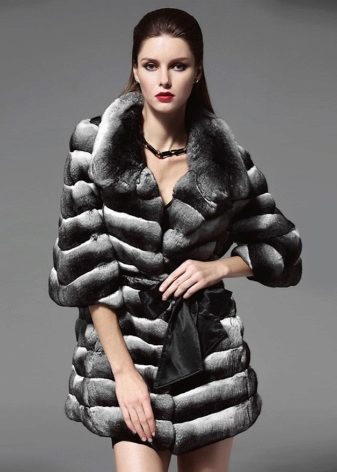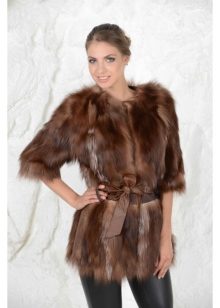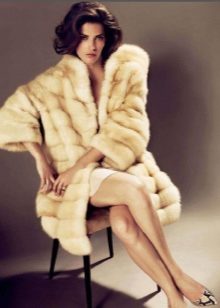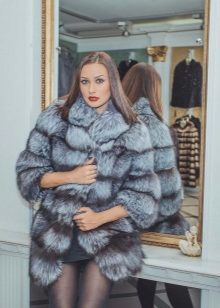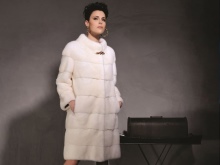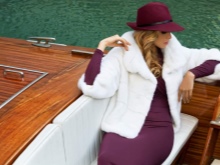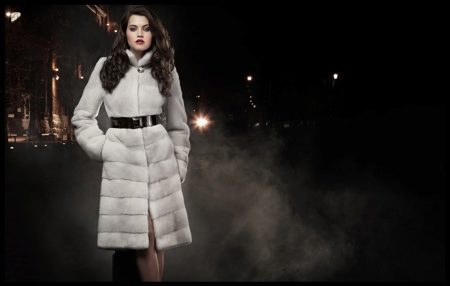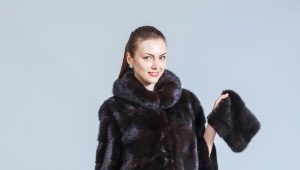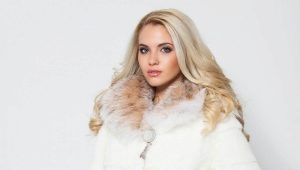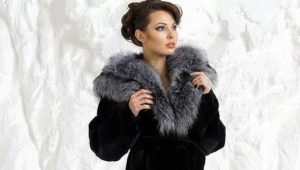How to choose a quality fur coat
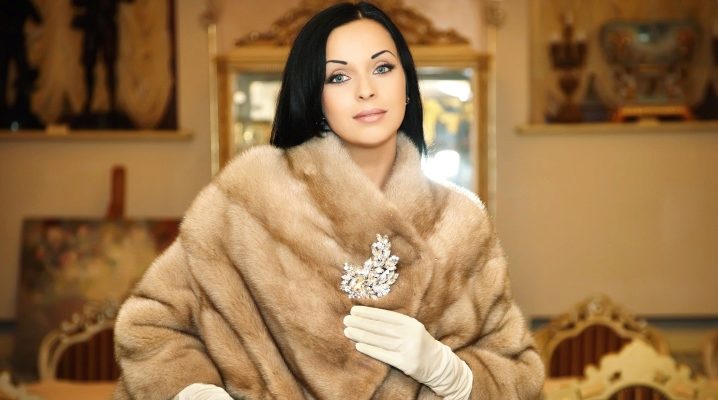
What to look for when buying
Guides when buying a fur coat each has its own. One person acquires it, relying, first of all, on its functional qualities: to warm, be comfortable and serve for a long time. Another wants her to be beautiful and fashionable. The third is guided when choosing the price of the product. Most buyers strive to meet all these criteria, but objectively, the main ones are those due to which the fur coat was once invented: in order to enjoy its warmth, comfort and beauty in the winter cold, and as many seasons as possible.
What you need to know in order to choose a quality thing?
Type of fur or from whom the future new dress. He defines:
- ability to keep warm
- shelf life,
- compliance with the climate of residence of the owner,
- external qualities.
The variety of fur animals is so great that the range of fur coats in our days is huge. They all differ in color, length, thickness of hair, luster, water-repellent properties and have, in turn, subspecies, offering variations of these characteristics.
Treatment
Processing of fur skins. May enhance or weaken the natural parameters of the fur. By such treatment is meant coloring, toning, cutting, plucking.
Sometimes the treatment is used to improve the appearance of not the best quality fur. For example, coloring or toning can give the hairs a missing shade and shine. Flawless natural fur can also be dyed or tinted in order to completely transform its color or make it unusual. If the dyeing was done in compliance with the technology and suitable dyes, the properties of the fur will not deteriorate at all. Haircut and partial plucking of hair is one of the ways to diversify the assortment range of goods, giving the fur new properties. Such products look very elegant, have a more refined silhouette, but are considered to be less durable and warm.
Quality raw materials
Skins are made to make them suitable for sewing: soft and elastic. It is carried out in 4 stages:
- 1st: the skin is pre-cleaned from meat fibers, fat, other contaminants and soaked,
- 2nd: remove the remnants of the veins,
- 3rd: carry out tanning,
- 4th: finally cleaned and dried after the previous stages.
It is the technology of manufacture that distinguishes fur coats produced in a good factory from those made in handicraft production.. "Self-dressing" can have a harder skin with less luster fur and even produce an unpleasant odor, which later only intensifies. Improper dressing can greatly reduce the service life of the product, degrade its appearance and useful properties.
Quality tailoring. Depends on:
- the sizes of the sewed skins: whole or fragments,
- evenness of seams and durability of threads,
- good fabric lining.
It is better that the product was sewn from solid skins. If it is created from their parts - less than 15x15 cm, then in 2-3 seasons it will start to tear up. A fur coat, made of pieces, should cost 20-30% cheaper.
The exception is a special type of tailoring, which is often used by Italian manufacturers. This is a rather expensive technology, in which small pieces are carefully selected to each other using a computer and sewn together "along the oblique." Due to the accuracy of selection from the front side, the fur coat looks as if sewn from solid skins, and sometimes more interesting: the fur fabric flows beautifully and seems to even shine more than usual. Fur coats made using this technology are the same as those made from solid skins, but will last less.
It is important that all the elements of the canvas were sewn, not glued. Clay is afraid of moisture and will withstand a maximum of one season. The seams on the lining, where it connects to the fur fabric, also need to be examined: are there any defects in the area of the sleeves, collar, or sticking threads. Lining fabric should be the right type. A good manufacturer will not use inappropriate material for the lining.
Important Tips
- Look at the fur. Knowing the features of different animals, you can easily distinguish the original from the fake. So the silver fox, for which the fox is often mistaken, can be easily recognized by looking at the color of her hair: they are gray at the root, white in the middle, black at the tips. Lisopes are two-colored. Nutria is sometimes given for beaver, which is more expensive. Remembering that he is also fluffier, it is easy to recognize fraud. Besides, there should be no bald spots, rust marks, discolored spots on the fur coat.
- Touch the fur. Good at stroking against wool quickly returns to its place. When twitching hairs should not fall out. And if the product was painted, it is necessary to check the quality of staining: hold it with a damp light cloth and see if there are any traces of paint on it.
- Inspect the core - the reverse side of the web. Diligent manufacturers specifically leave for this bottom hem is not fully hemmed. The correct core is soft, elastic, light gray, without cracks. Even in dyed skin, it remains so. If it is yellow, then the fur is old, and the new thing will please not for long. If the core creaks or rattles when shaken, it means that at some stage of work with raw materials there were violations.
The service life is determined by the wear resistance (wear) of the fur. The higher it is, the better is the ability of the pile to resist the snow, rain, bright sunlight and active use, including when traveling in public transport. The treatment of hides, in which the hair is tweaked, sheared or dyed, shortens the life span of the fur coat.
What is the warmest fur coat
If the champions in fur wear are waterfowl animals with a heavy, thick, shiny hairiness, then by the ability to keep warmly, victory will be behind the most fluffy, having a long and dense hair covering that contains more air.
The skins of the reindeer and the bear are the warmest, therefore they are suitable for the harsh conditions of the Far North and are mainly found only there. Of the more available:
- Very warm, well warming in the winter at the lowest temperatures: arctic fox, raccoon, fox, wolf, sable, marten, hare.
- Waterfowl - beaver, nutria, otter, is also very warm and is especially good in more humid climates.
- Medium warm, for regions with moderately cold "European" winter: mink, columns, astrakhan.
- Cold, rather, for beauty: ermine, chinchilla, goat, rabbit, marmot, gopher, hamster.
What is the lightest fur coat
Outerwear weight determines the comfort of its use. As a rule, weight is inversely proportional to the ability to keep warm. Therefore, the thinner, softer and lighter the skin, the colder. And here everyone defines for himself what is more important for him: the lightness of the thing or the amount of heat that it gives.
- Fur coat from: hamster, hare, gopher - easiest of all.
- Average weight from: rabbit, nutria, muskrat, mink, ferret, squirrels.
- BUT the hardest from: otter, beaver, fox, sable, wolf, raccoon, astrakhan.
Although a small fur coat is comfortable to wear, it should be understood that its excessive lightness may indicate that the skins were strongly stretched to save raw materials. The haircut and the partial plucking of the hairs also facilitate the fur. Because of all these manipulations, his ability to warm and shelf life are reduced.
In modern production they began to do so with naturally heavy furs, in order to facilitate them and make them more comfortable to wear. There is even a special category of clothing - summer coats. They are preferred by those who, in the summer, cannot part with such a spectacular accessory, putting it on in an effort to look particularly stylish.
Motorists also often choose lightweight fur coats.
